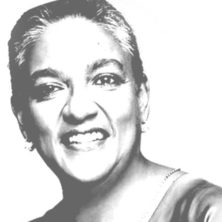Perspectives
We are All Capable of Greatness
When Tracy and I began thinking about the “do” part of CoreAlign we knew that we wanted to re-examine leadership in the movement. There were so many leaders that we both loved and admired deeply, and yet, collectively we weren’t producing the kind of success that could be expected. What was going on?
The thought of delving into the leadership literature or investigating the different leadership programs was daunting. There is a huge literature in the business sector about leadership – everything from the five levels to the seven habits to the twenty-one stages of leadership. In terms of training programs, there are the Rockwood Leadership Institute, the Interaction Institute for Social Change, the Social Justice Leadership Institute, to name just a few. With our academic training, however, we were both game to dig in.
And then I stumbled across Malcolm Gladwell’s Outliers: The Story of Success. I picked it up not because I thought it was about leadership but because the word “success” caught my eye. As I was absolutely committed to CoreAlign and the movement being successful, I thought any tips along the way would be welcomed.
As Gladwell’s work is wont to do, Outliers completely flipped the script on leadership. Rather than what makes a successful person, based on their habits, skills, characteristics, drive or intelligence, he asks: where do they come from? According to him, extraordinary achievement is more about opportunity and legacy than about individual talent. Through a variety of fascinating explorations in ice hockey, music, computers, law and violence, Gladwell traces back the histories, opportunities and hard work involved in greatness. It was an easy and fascinating read.
So, Tracy and I also experimented with flipping the script on leadership in our movement. Instead of thinking about individual leaders or the skill sets we saw as lacking, we started asking ourselves questions like, what is the current model of leadership in our field and why is it so? Instead of focusing on the strengths and weakness of current leaders, what if we studied the conditions that create, support, punish and reward those characteristics? What if, instead of looking at individual skills, we think about the kinds of qualities we want in our leaders and then create the conditions to cultivate and encourage those qualities? And, what would it take to scale up a different model of leadership in ways that didn’t require intensive one-by-one retraining?
When we shifted from thinking about individual leaders to focusing on the current model of leadership that is rewarded in the movement; whole new possibilities opened up. Our field is populated by an array of small and large nonprofits that sometimes collaborate but more often compete with each other for funds, recognition and strategies. This encourages a leadership model that is competitive, proprietary, conservative and hierarchical. These behaviors serve organizational survival well, but are not characteristics that lend themselves to innovation, inspiration, collaboration and risk-taking.
What if we could identify some leadership characteristics that we think will move our field out of its current rut and towards doing things differently? And then, what if CoreAlign created the space and conditions for those characteristics to flourish? Could we create opportunities to activate and cultivate different qualities that would lead to different ideas and outcomes?
We decided that, apropos to the competitive and conservative leadership model, we would create alternative spaces for leaders to show up as curious, generous, and generative with a willingness to lean into risk and discomfort. Borrowing from Gladwell’s idea that everybody is capable of greatness, with the right opportunity and legacy determining who succeeds, we decided to trust that all leaders in our field are capable of being both competitive and generous, curious and proprietary, risk-taking and conservative, innovative and hierarchical. We just needed to create complementary spaces where they could together show up and foster the characteristics of a different model, a model not necessarily encouraged or rewarded in other places.
This has become one of our key design criteria in CoreAlign, creating multiple spaces, in the interstices of competing organizations, where people can practice being curious about each other and new ideas, generously share of their thoughts and wisdom, generate new possibilities and solutions, and all the while be willing to go to risky and uncomfortable places in pursuit of change.
We’ve implemented this idea at Practice Circles across the country. If you participated in a Practice Circle, did we do a good job of putting these ideas into practice?
